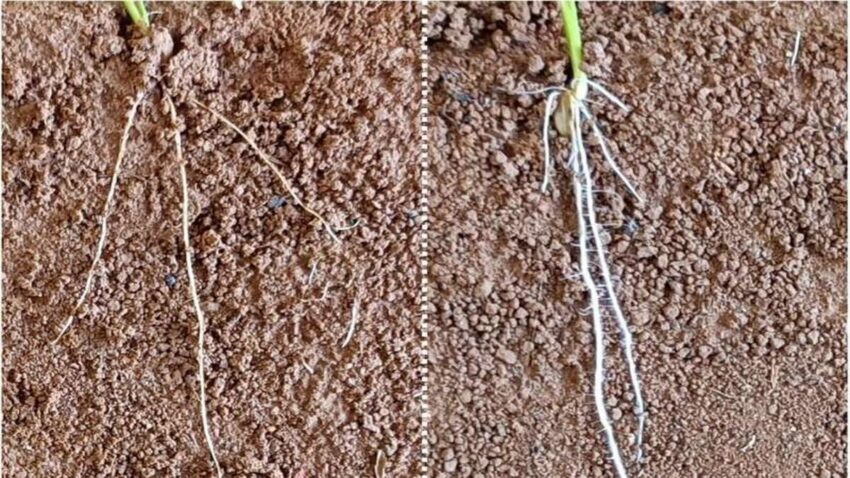The researchers discovered a new mechanism where ABA promotes the production of auxin, which enhances root gravitropism to grow them at steeper angles in response to drought. Experiments showed that plants with genetic mutations that block ABA production had shallower root angles and weaker root bending response to gravity compared to normal plants. These defects were linked to lower auxin levels in their roots. By adding auxin externally, the researchers restored normal root growth in these mutants, showing that auxin is key to this process.
Scientists have discovered how plants adapt their root systems in drought conditions to grow steeper into the soil to access deeper water reserves.
More information:
Yali Xiong et al, ABA-auxin cascade regulates crop root angle in response to drought, Current Biology (2025). DOI: 10.1016/j.cub.2024.12.003
Journal information:
Current Biology
Plant scientists from the University of Nottingham, in collaboration with Shanghai Jiao Tong University, have identified how abscisic acid (ABA), a plant hormone known for its role in drought response, influences root growth angles in cereal crops such as rice and maize. The results have been published in Current Biology.
Drought poses a major threat to global food security, and enhancing the ability of crops to withstand water shortages is crucial. Drought, a major abiotic stressor, has caused substantial crop production losses of approximately $30 billion over the past decade. With a projected population of 10 billion by 2050 and serious freshwater depletion, developing drought-resistant crops is of paramount importance.
Plants rely on their root systems, the primary organs for interacting with soil, to actively seek water. In drought conditions, water often depletes in the topsoil and remains accessible only in the deeper subsoil layers. Abscisic acid (ABA) plays an important role in helping plants adapt to these challenging conditions. This new study gives new insights into how ABA changes root growth angles to enable plants to reach out deeper subsoils in search of water.

